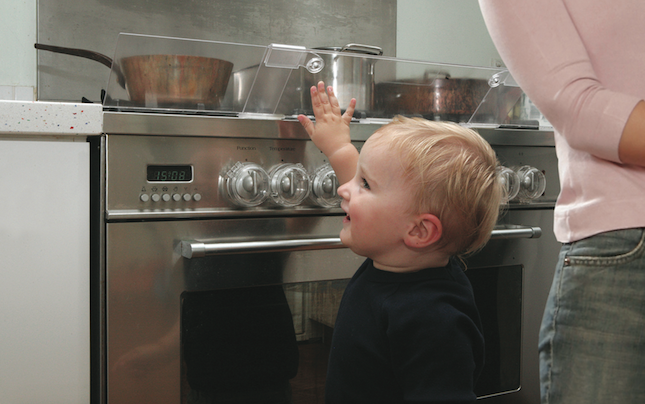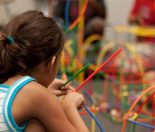Little is as exciting as seeing your child take their first steps. Simultaneously, little is as daunting, stressful or nerve-wracking as this new ability to walk – it does after all pose potential dangers for your toddler.
Still it’s not difficult to reduce these risks to help ensure that your child remains safe from accident and injury as they grow more mobile and independent. Here are some simple tips and tools for avoiding hazards and keeping your kids safe around the home.
Keep your kids safe once they are walking – around the home
Kitchen
The kitchen is one of the most hazardous areas of the home at the best of times. Keep all sharp, hot and otherwise dangerous substances as far away from reach as you can. Place sharp items on high shelves, or safely stored immediately after use. Keep pot handles away from edges to avoid them being knocked over and secure cleaning materials, which can be poisonous. Safety products are definitely recommended, including locks and latches for cupboards, heat-resistant guards to cover stove tops, microwave and refrigerator locks and so on. You might also consider gating off the entire kitchen if that’s an option.
Bathroom
The bathroom is another perennially dangerous room in the home – but especially when children start to walk. Much like the kitchen, it’s important to keep dangerous items such as medication out of reach. Bathrooms can also be slippery and soapy for adults, let alone children who are just learning to walk, so it’s important to ensure that the tiles are dry, or that non-slip mats are used to create friction, and prevent nasty accidents such as falls and bumps on the head. Filling the bath with hot water can always pose risks, but with children able to walk about on their own it’s important to keep them away from the bathroom while the water is filling up, to avoid burns, or even drowning, should they choose to step into the bathtub. Never leave a child unattended in the bathroom, and always check the temperature before placing a child inside.
Night time
Now that children can walk about on their own, night time wanderings can be some of the riskiest moments in the day. After everyone has gone to sleep, a curious child may wake up and find themselves able to leave their cot or bed without assistance. This can lead to a multitude of accidents and injuries, from bumping into furniture, doors and walls, to slipping on tiles and more. Night lights can be an excellent tool to allow a bit of light throughout the night, but even more important can be the simple rearrangement of household objects; for instance, moving chairs and tables out of harm’s way, ensuring all cabinets are secured, drawers are shut, and any potentially hazardous objects are safely placed away. This includes small objects such as toys or pieces of food (although these should never be left out in any case,) kitchenware, clothes, shoes, electrical cords and other tripping hazards.
Windows and balconies
Now that children can walk around on their own, it will also be easier to reach windows, balconies, sliding doors and more. Of course, these can lead to a wide variety of injuries and hazards, from falling out of windows, to choking on blind cords and beyond. It’s incredibly important to ensure children cannot access windows and balconies when unaccompanied by adults. Try not to place furniture near windows that children could climb up onto, and keep balcony doors and windows firmly locked when not in use. As children grow, education is also an integral part of their development; teach children that climbing out of windows or onto balconies can be incredibly dangerous, and encourage them to stay as far away as they can – particularly if you reside in a tall apartment block, where falls can be serious and even fatal.
Household
Once children learn to walk, it is only a matter of time before they are running and jumping around! Try to avoid bumps, knocking over furniture and hitting sharp edges of chairs and tables by encouraging children to play in safe areas. Protective safety items can be implemented to protect children from sharp corners and from heavy furniture falling, but ultimately children should avoid these hazards wherever possible throughout the home.
One common injury that children face at home is electrocution by placing fingers into electrical sockets. As they are near to the floor, children who are learning to walk will often notice them and try to play with them. Keep sockets switched off whenever they are not in use, and cover them with safety outlet plugs.
It can seem daunting and stressful to take in the many new hazards and dangers that children face as they begin to learn to walk, but it’s important that a household is monitored and that hazards are prevented wherever possible. Many of these risks can be avoided with simple common sense, such as moving toys or electrical cords to prevent tripping over, and keeping hot and sharp objects away from the edge of countertops. Education is a huge part of any child’s development, and parents have a responsibility to not only protect their child with these tips and tools, but to teach them what is safe and unsafe throughout the home.







